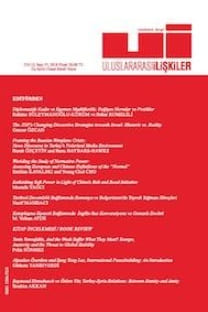Sırp İsyanının Uluslararası Boyutu (1804-1813)
Sırp isyanı (1804–1813) Balkanlar’da Osmanlı rejiminin çözülüşünde çok kritik rol oynayan modern tarihin en önemli hadiselerinden biridir. İsyan, Semendire sancağını (19. yüzyıl Sırbistan’ının teritoryal çekirdeği) ele geçiren ve Sırplar üzerinde tam bir baskı rejimi kuran Dayılara karşı patlak vermiştir. İsyan başlangıçta sadece yerel boyutu haizdir. Bu evrede Osmanlı yönetimi isyanı Dayılar rejimini bertaraf etmek için bir fırsat olarak değerlendirmiş ve isyancıları desteklemiştir. Ancak isyan kısa bir süre sonra bu yerel niteliğini aşarak uluslararası bir sorun haline gelmiş ve 1813 Ekim’inde sona ermesine kadar bu özelliğini muhafaza etmiştir. Bu çalışmada şu soruları cevaplamaya çalışacağız: Sırp isyanı neden ve nasıl bir uluslararası sorun haline gelmiştir? Sırp isyanının uluslararası boyutunun temel dinamikleri nelerdir? Osmanlı İmparatorluğu ve Büyük Güçler’in isyan karşısındaki politikaları nedir? Bu politikaların değişmesinde hangi faktörler önemlidir?
Anahtar Kelimeler:
19. Yüzyıl, Sırp İsyanı, Osmanlı İmparatorluğu, Balkanlar, Büyük Güçler
The International Dimension of Serbian Uprising (1804-1813)
The Serbian uprising (1804-1813), which played a very critical role in the disintegration of Ottoman regime in the Balkans, is one of the most important events in the modern history. It broke out against Dayis who captured the Semendire sanjak (territorial core of 19th century’s Serbia) and established an oppressive regime over the Serbians. In the initial phase, the uprising had only a local dimension. When the Ottoman government regarded the uprising as an opportunity to eliminate the Dayis’ regime, it supported the rebels. But in a short time, it went well beyond its local character and became an international question. Up to its end in 1813, it preserved this character. In this study we try to answer the following questions: why and how did Serbian uprising become an international question? What were the basic dynamics of the international dimension of Serbian uprising? What were the policies of Ottoman Empire and Great Powers toward the uprising? Which factors were important to the changing of these policies?
Keywords:
19th Century, Serbian Uprising, Ottoman Empire, Great Powers, Balkans,
___
- ......
- ISSN: 1304-7310
- Başlangıç: 2004
- Yayıncı: Uluslararası İlişkiler Konseyi Derneği İktisadi İşletmesi
Sayıdaki Diğer Makaleler
Küresel Eşitsizlik: Güncel Tartışma, Önemi ve Politika Önerileri
Hegel, Dünya Tarihi ve Özgürlük Mücadelesi Olarak Uluslararası İlişkiler
Darfur: Koruma Yükümlülüğü ve İnsancıl Müdahale Kavramları Çerçevesinde Bir İnceleme
Sırp İsyanının Uluslararası Boyutu (1804-1813)
Fuat AKSU, Türk Dış Politikasında Zorlayıcı Diplomasi
